By Al Hemingway
On a wintry night in December 1773, about 70 men, many of whom were disguised as Indians, unceremoniously dumped an estimated 10,000 pounds, the modern equivalent of $1 million, of tea into Boston harbor. Their rebellious act against Great Britain would ignite a revolution that would eventually witness the birth of the United States. But were their actions entirely pure and noble? Would the tossing of hundreds of crates of tea into the cold waters of Massachusetts Bay ensure that the new nation be different than the government that now ruled the colonies?
In his new book, American Tempest: How the Boston Tea Party Sparked a Revolution (Da Capo Press, Cambridge, MA, 2011, 304 pp., illustrations, notes, index, bibliography, $26.00, hardcover), author Harlow Giles Unger reveals what transpired after the Boston Tea Party, the major characters involved and, incidentally, how thousands of innocent loyalists were harassed, subjected to physical violence, and uprooted from their homes.
 Boston was a hotbed of rebel activity during the American Revolution. Individuals such as the fiery Samuel Adams; his composed lawyer cousin, future president John Adams; Paul Revere; James Otis, Jr.; John Hancock; and Thomas Cushing were members of the Tea Party. Ironically, with few exceptions, the majority of Tea Party members were not elected to the Continental Congress and did not assist in shaping the future of the fledgling country after England was defeated at Yorktown, Virginia, in 1781.
Boston was a hotbed of rebel activity during the American Revolution. Individuals such as the fiery Samuel Adams; his composed lawyer cousin, future president John Adams; Paul Revere; James Otis, Jr.; John Hancock; and Thomas Cushing were members of the Tea Party. Ironically, with few exceptions, the majority of Tea Party members were not elected to the Continental Congress and did not assist in shaping the future of the fledgling country after England was defeated at Yorktown, Virginia, in 1781.
Prior to the Boston Tea Party in 1773, Sam Adams was the instigator who kept Bostonians at a fever pitch. His dynamic oratories drew large crowds that met in local pubs and underneath the “Liberty Tree” near Boston’s square. He organized mobs that terrorized customs commissioners, citizens, and merchants who supported Great Britain. Anyone who remained loyal to the Crown was tarred and feathered and had boiling tea forced down their throats.
Another fascinating character of the period was James Otis, Jr. The Harvard graduate could trace his roots back to the early English settlers who arrived in America, and it is he who historians say coined the phrase “taxation without representation.”
Although not a born revolutionary to the degree of the incendiary Sam Adams, Otis could also incite a crowd. His erratic and unstable behavior, which some attribute to being clubbed by a British tax commissioner, prevented his becoming an active member of the Continental Congress. Today, some historians claim that Otis was schizophrenic or manic-depressive. During his lucid moments, however, Otis could be a brilliant statesman and lawyer. Whatever the reason, he had to sit out most of the revolution because of his condition. He met an untimely death when he was struck by lightning while observing a thunderstorm.
The passionate Sam Adams, whose forceful diatribes caused many colonists to take up arms to fight the British, did not fire a shot in anger during the war. As his popularity waned in Boston, he virtually faded from the public’s view. After the war, Adams tried to run for Congress, but was defeated. He did serve as the lieutenant governor of Massachusetts for five years under John Hancock, and then inherited the position of governor. He won the next election and continued to serve in that post until 1797.
Ironically, while serving as governor, Adams made an extraordinary statement when residents of the state protested the raising of taxes. “The man who dares to rebel against the laws of a republic ought to suffer death,” he said. It was a strange statement coming from the man who was probably the main driving force behind the colonies’ revolt against the British tax system.
Another sad chapter to the whole affair, according to Unger, was the displacement of thousands of Americans who remained loyal to the British. Many fled westward to escape the taunts and physical violence levied against them by their fellow countrymen. The author writes that “well over sixty thousand, or more than 10 percent of that region,” were New Englanders.
Perhaps the most paradoxical part of the entire American Revolution was that the colonists had formed a government that was identical in numerous ways to its predecessors. Virginia statesman Patrick Henry said that the Constitution had created “a great and mighty president with the powers of a king.” Congress, he said, had the ability to implement direct taxation, something that Americans had opposed and died for during the revolution. From that standpoint, Unger maintains, “The Revolution from Britain, it seemed, had been for naught.”
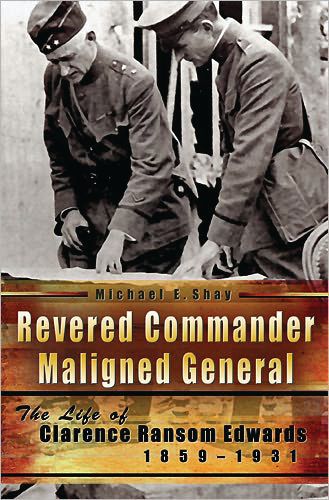 Revered Commander, Maligned General: The Life of Clarence Ransom Edwards by Michael E. Shay, University of Missouri Press, Columbia, 2011, 282 pp., photos, maps, notes, index, $45.00, hardcover.
Revered Commander, Maligned General: The Life of Clarence Ransom Edwards by Michael E. Shay, University of Missouri Press, Columbia, 2011, 282 pp., photos, maps, notes, index, $45.00, hardcover.
Finishing dead last in his class at West Point certainly did not hinder Clarence Ransom Edwards from climbing the promotional rung. However, it would be his acid tongue and controversial behavior that would put him in a negative light with American Expeditionary Forces commander General John J. Pershing during World War I. Pershing would eventually dismiss Edwards as head of the 26th “Yankee Division.”
Although a Spanish-American War veteran, Edwards would see his first actual combat in the Philippines. At the Battles of Santa Cruz and Zapote Bridge, he demonstrated great bravery and received three Silver Star citations. From that point, Edwards had a meteoric rise. Immediately before America’s entry into the Great War in 1917, he was in charge of all U.S. forces in the Panama Canal Zone.
Edwards was given the arduous task of getting the Yankee Division into shape, a job he did so well that it was the second complete division to arrive in France ready for combat. Despite his administrative skills, Edwards made instant enemies of many senior officers, including Pershing. A man like Pershing demanded total loyalty from his staff, and Edwards was not that kind of soldier. When he found fault, he would voice his opinion and not mince words.
The final straw came in October 1918, when Edwards received a report from some soldiers who had talked with German troops. The Germans, they said, were eager for an armistice to end hostilities. Edwards, believing he had stumbled upon important information, notified his superiors, stressing that no vital information had been exchanged. Unfortunately for Edwards, First Army headquarters did not view his report in a favorable light. They replied by saying that fraternization between the troops must be stopped immediately. This action was the culmination of months of bickering, and Edwards was relieved of command.
Edwards may have been despised by many of his peers, but his men loved him and affectionately called him “Daddy.” When he was lying on his deathbed and the call went out to veterans of the Yankee Division that their beloved leader needed blood transfusions, countless soldiers offered to be donors. Years after his death, his men would remember him with plaques and ceremonies. To the Doughboy in the field, unaware of the backstabbing and quarreling among the general staff, Edwards would always be their “Daddy.”
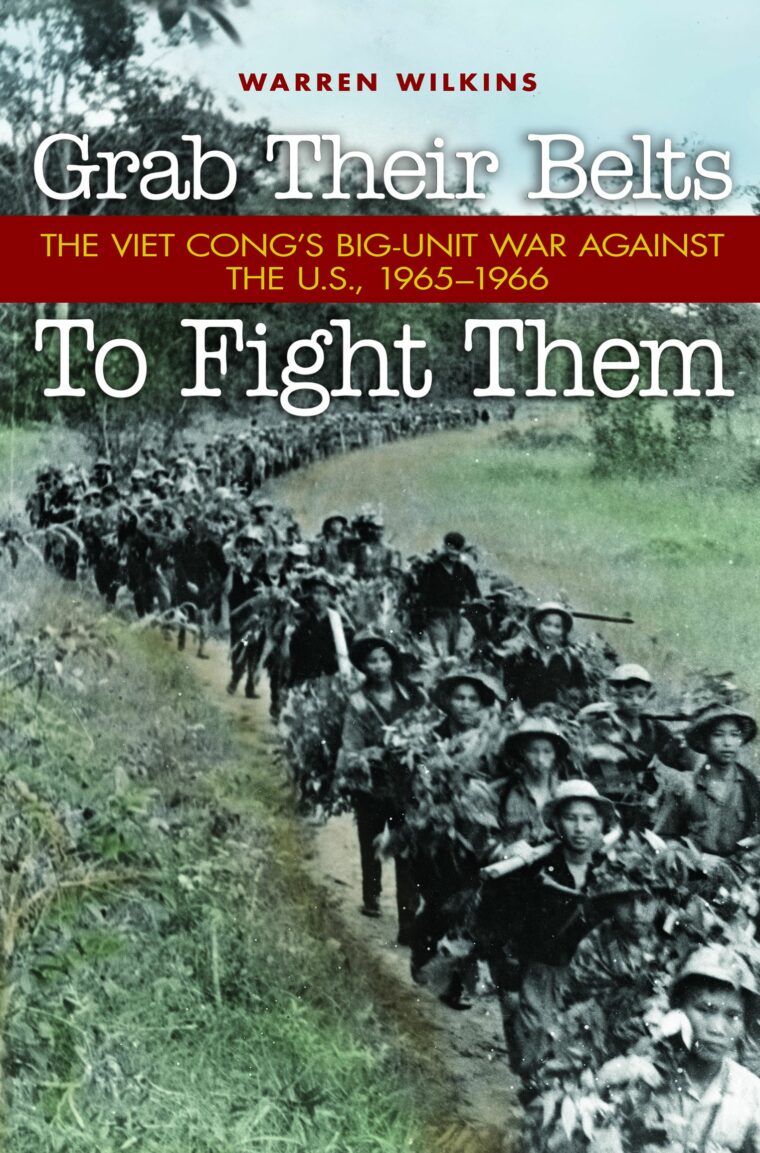 Grab Their Belts to Fight Them: The Viet Cong’s Big-Unit War Against the U.S., 1965-1966 by Warren Wilkins, Naval Institute Press, Annapolis, MD, 2011, 288 pp., photos, maps, notes, index, $35.95, hardcover.
Grab Their Belts to Fight Them: The Viet Cong’s Big-Unit War Against the U.S., 1965-1966 by Warren Wilkins, Naval Institute Press, Annapolis, MD, 2011, 288 pp., photos, maps, notes, index, $35.95, hardcover.
Many Americans who never served in Vietnam are under the impression that American forces fought a ragtag, poorly trained group of soldiers. The image of an old Vietnamese peasant pulling up an antiquated, rusty rifle from his well at night to take a few potshots at passing American soldiers is still widely believed.
Nothing could be further from the truth. As the author points out in this book, the main Viet Cong units were highly trained and motivated. Their strategy of “grabbing their belts,” or fighting Americans at close quarters to deny them use of their superior firepower, was their overriding strategy, and led to many bloody clashes with U.S. troops.
Wilkins focuses on the first year or so of the war, examining a few of the major battles where Americans and Viet Cong tangled. It was a risky venture asking for artillery or air support when your enemy was just yards away on the battlefield. For Americans who at times relied heavily on their supporting arms, it meant using discretion to avoid taking friendly casualties. Wilkins does an excellent job in describing the use of firepower in battle and what strategy the communists employed to negate the ace card the Americans held.order of the day, and opportunities for blacks were limited. However, Gravely was one of the first blacks accepted into the U.S. Navy and was commissioned an officer at war’s end. Even while wearing the uniform, he was arrested by military police while in Miami for impersonating an officer, and was denied housing in Virginia during the Korean War.
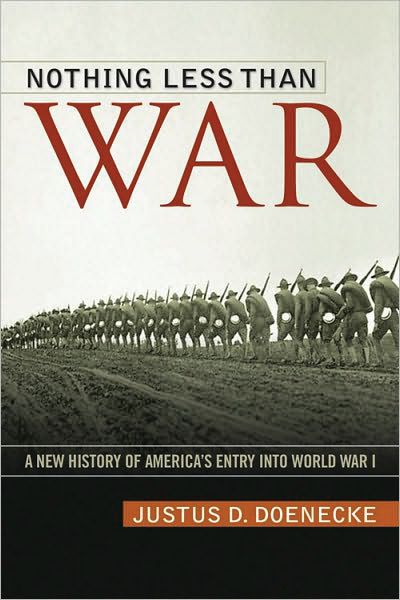 Nothing Less Than War: A New History of America’s Entry into World War I by Justus D. Doenecke, University Press of Kentucky, Lexington, 2011, 416 pp., notes, photos, $40.00, hardcover.
Nothing Less Than War: A New History of America’s Entry into World War I by Justus D. Doenecke, University Press of Kentucky, Lexington, 2011, 416 pp., notes, photos, $40.00, hardcover.
The author, a professor emeritus of history in South Florida, reexamines the reasons the United States finally entered World War I. He delves in great detail into the presidency of Woodrow Wilson, his cabinet members, and public opinion. Wilson was in a quandary over the shipping issue. Great Britain had vowed to seize any neutral ship it deemed destined for Germany. Public debate on whether or not to side with Great Britain was fueled by the media. Publisher William Randolph Hearst had a decidedly pro-German slant as compared to other publications, and wanted to remain neutral in European affairs.
Many in Wilson’s cabinet lacked diplomatic skills and gave him poor advice. The public outcry over the sinking of the British ocean liner Lusitania, on which nearly 1,200 died, including 100 children, was a major contributing factor to America declaring war on Germany in 1917.
As the author states, Germany forced Wilson to ask Congress for a declaration of war. Ironically, the political climate with Germany was improving at the time and worsening for England. Still, it was a close call for the president. “He could only hope that the conflict would justify the required sacrifice,” Doenecke writes.
 Brother of Mine: The Civil War Letters of Thomas & William Christie, edited by Hampton Smith, Minnesota Historical Society Press, St. Paul, 2011, 330 pp., notes, bibliography, $19.95, softcover.
Brother of Mine: The Civil War Letters of Thomas & William Christie, edited by Hampton Smith, Minnesota Historical Society Press, St. Paul, 2011, 330 pp., notes, bibliography, $19.95, softcover.
Letters are a gateway into the hearts and minds of soldiers who fight in wars, and the Civil War is rich with correspondence that has survived between family members on the front and at home.
The Christie brothers, 13 years apart in age, wrote a treasure trove of letters to their father, sister, and younger brother while serving together in the 1st Minnesota Light Artillery. The unit participated in the battles of Shiloh, Corinth, Kennesaw Mountain, Atlanta, and Bentonville. The battery also served during the 40-day siege of Vicksburg.
The letters penned by the brothers, atrocious spelling and grammar aside, give the reader a vivid, and at times graphic, picture of what transpired during the fighting. On April 15, 1862, a week after the Battle of Shiloh, William wrote to his father, saying: “The bullets were pouring upon us like a hail storm. Just as soon as we got our guns into position we began to give them our compliments with shell and canister.”
Both brothers survived the conflict. William became a successful farmer, passing away in 1901. Thomas developed a deep religious fervor during the conflict that followed him into civilian life. He was ordained a minister, and with his wife traveled to Turkey as missionaries. He died in 1921.
The Christies’ wartime letters are a microcosm of both northern and southern families during the Civil War, illustrating their hopes and fears and capturing a wrenching part of our nation’s history.
 Boeing B-17 Flying Fortress: Owner’s Workshop Manual by Graeme Douglas, Zenith Press, Minneapolis, MN, 2011, index, photos, illustrations, $28,00, hardcover.
Boeing B-17 Flying Fortress: Owner’s Workshop Manual by Graeme Douglas, Zenith Press, Minneapolis, MN, 2011, index, photos, illustrations, $28,00, hardcover.
Here is a book for any reader who has had a keen interest in actually owning a B-17 Flying Fortress. It has everything, including the plane’s history, technical specifications, diagrams, inventory of parts, and even the preflight check list required before takeoff.
One of the most famous aircraft ever constructed, the B-17 first appeared in the U.S. Army Air Corps in July 1935. By war’s end, nearly 13,000 of the planes would see combat in all theaters of operation.
The book has more than 250 photographs and drawings showing the reader how to restore the plane—that is, if you can find one. The author has more than three decades of experience with B-17s and is a part-time volunteer at the Imperial War Museum at Duxford, England. He spent considerable time assisting in restoring the B-17G Model Mary Alice and as a member of the ground crew for the Sally B. The book is a must-read for all B-17 enthusiasts—even if you do not own one.
 The Second Creek War: Interethnic Conflict and Collusion on a Collapsing Frontier by John T. Ellisor, University of Nebraska Press, Lincoln, NE, 2010, 499 pp., notes, index, maps, $50.00, hardcover.
The Second Creek War: Interethnic Conflict and Collusion on a Collapsing Frontier by John T. Ellisor, University of Nebraska Press, Lincoln, NE, 2010, 499 pp., notes, index, maps, $50.00, hardcover.
As the author states in his book, precious little has been written about the Second Creek War. As he points out, however, the war had tremendous economical and social impact on not only the Creeks themselves, but also on blacks and poor whites who were close neighbors of the Creeks.
The conflict raged over three states, Alabama, Georgia and Florida. By the start of hostilities, the Creek Nation had lost large tracts of land to encroaching white settlers and fraudulent government agents. That was the impetus for the fighting. Much of the combat was particularly bloody, with the entire town of Roanoke, Ga., being burnt to the ground, prompting the American Army to intervene.
By 1837, the Creeks were being forcibly removed from their land. However, many hid and found refuge within the affected states. Others sought safe haven with the Seminole tribe in Florida and continued to fight the war. Ironically, with the great depression of 1837, many farmers who occupied Creek land lost it to the more prosperous plantation owners, while many Creeks fared quite well in their new western homes. The Civil War split many Creeks, much as it did whites, with individuals fighting for both North and South.
Ellisor’s book sheds new light on a very misunderstood period of our nation’s history, an era that has been unfairly forgotten in many American textbooks.
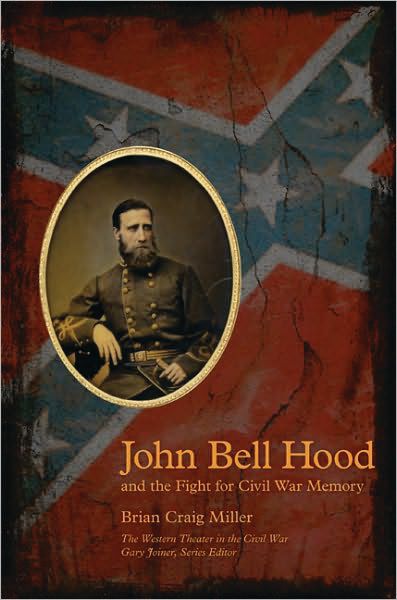 John Bell Hood and the Fight for Civil War Memory by Brian Craig Miller, University of Tennessee Press, Knoxville, TN, 2010, 318 pp., notes, index, $37.95, hardcover.
John Bell Hood and the Fight for Civil War Memory by Brian Craig Miller, University of Tennessee Press, Knoxville, TN, 2010, 318 pp., notes, index, $37.95, hardcover.
History has not been kind to John Bell Hood. The much-maligned Confederate general has been widely reviled for his military performance commanding the Army of Tennessee during the Civil War, when he suffered disastrous defeats at Atlanta, Franklin and Nashville.
Historian Brian Craig Miller takes a closer look at the life of Hood, and has a far different opinion of the man. His account, the first in more than two decades, claims that there is no concrete evidence that Hood was a gambler or drug user who recklessly endangered his troops on the battlefield. Many of these assertions, Miller writes, are myths that have been perpetuated through the years with no documentation to give them credence.
Hood tried for years after the war to defend his actions. He even wrote a memoir contradicting claims by Confederate general Joseph E. Johnston and Union general William T. Sherman of his incompetence on the battlefield. “By examining the historiography carefully, and uncovering how the Hood paradigm came to be constructed, we can begin to understand how some prominent historians have misrepresented John bell Hood,” writes Miller.
Even on his deathbed, when he was succumbing to yellow fever in 1879, Hood remained feisty. He fought the disease much as he had fought on the battlefield, when he uttered to his doctor, “I will fight this fight as long as there is a shot left in the locker.” Unfortunately for both Hood and the Confederacy, he lost most of his fights.
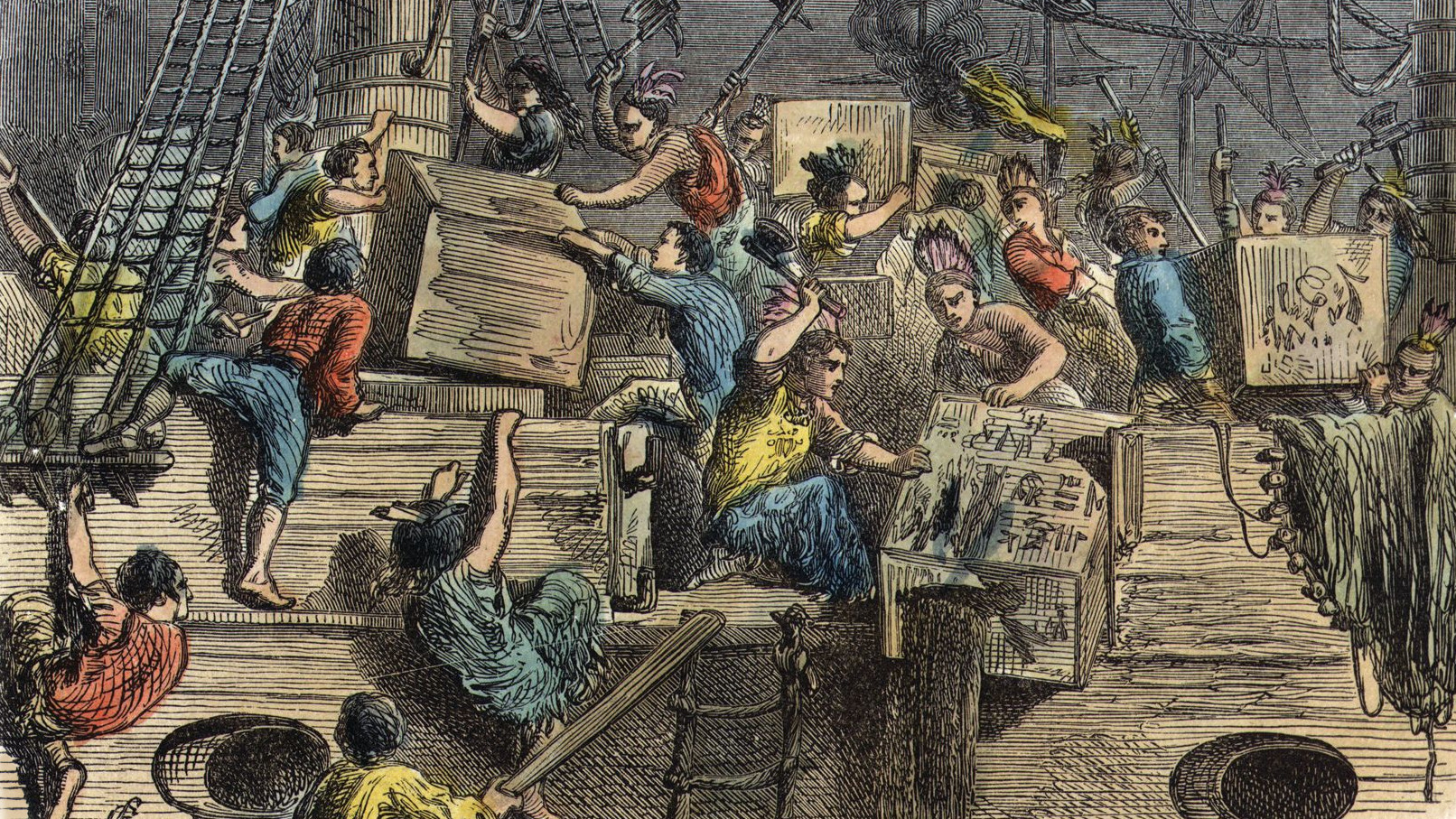
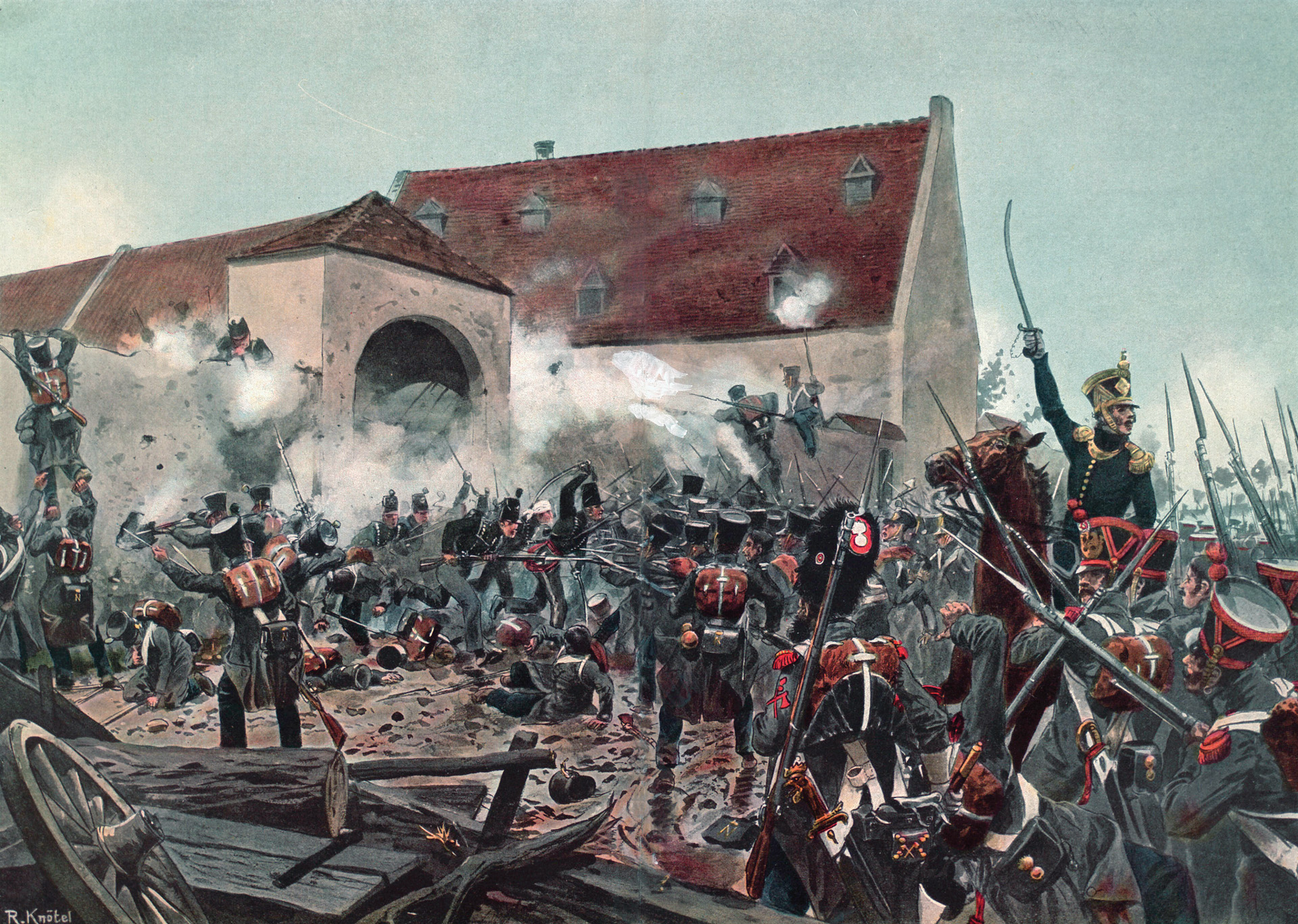
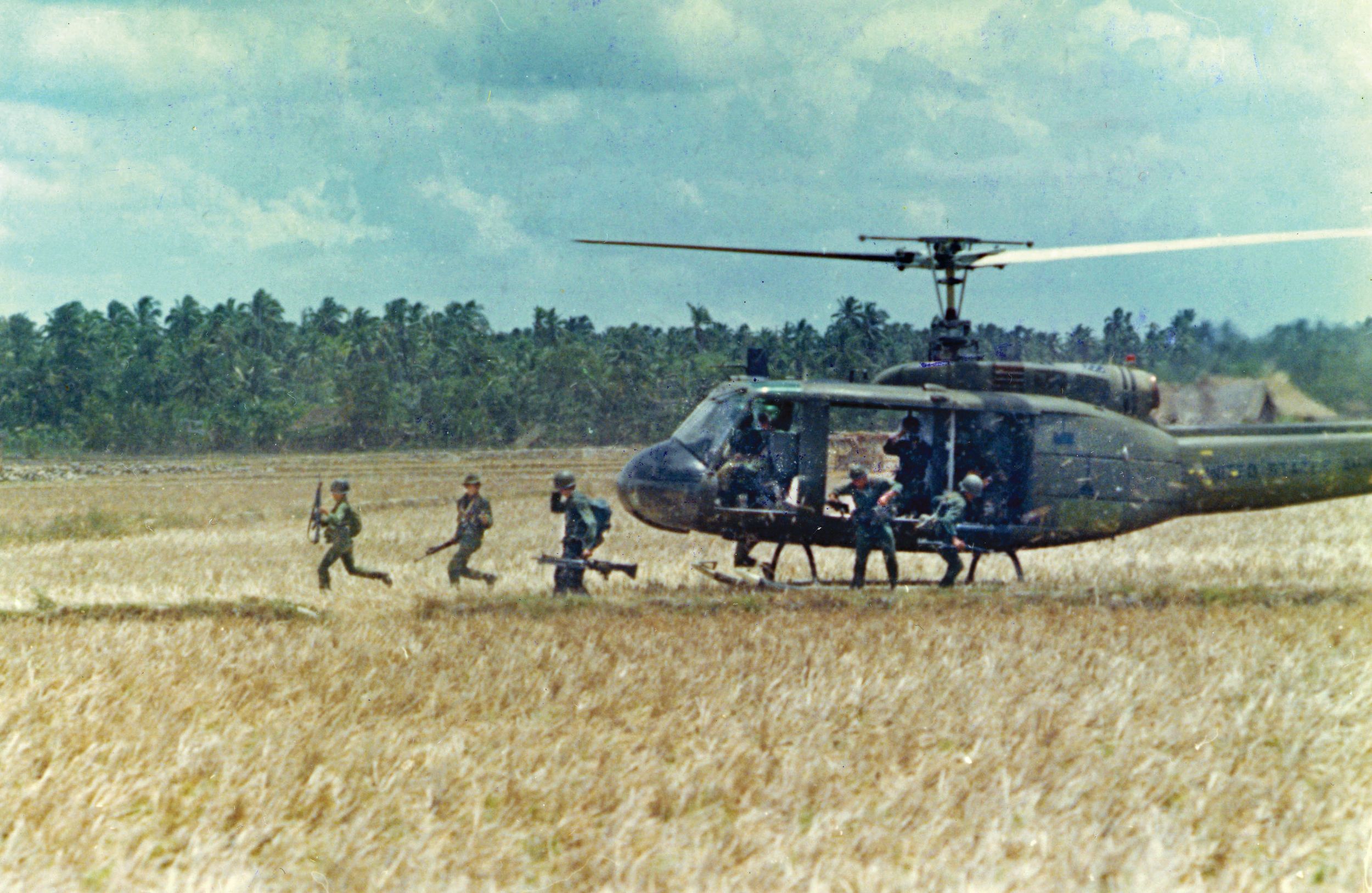
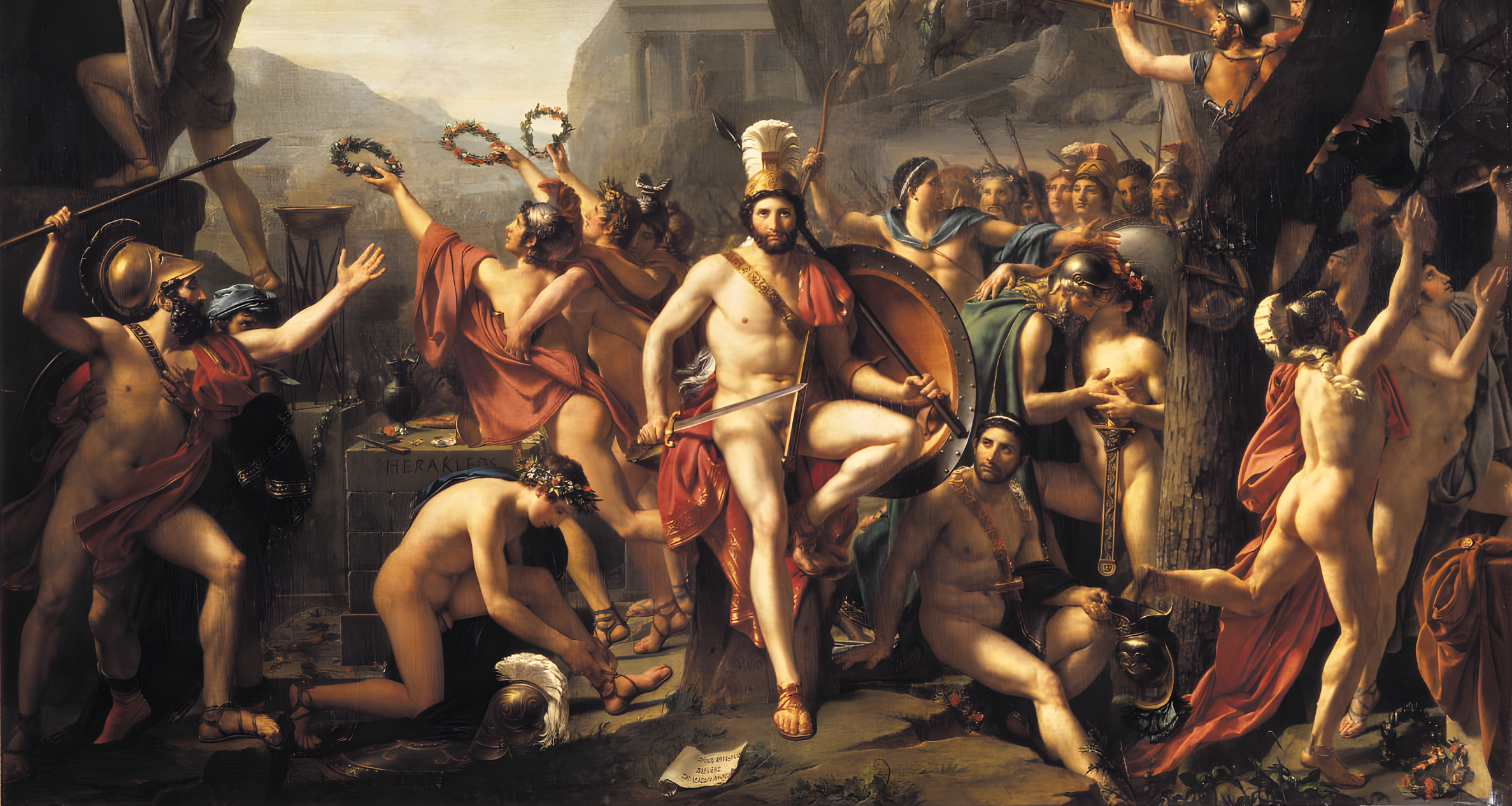
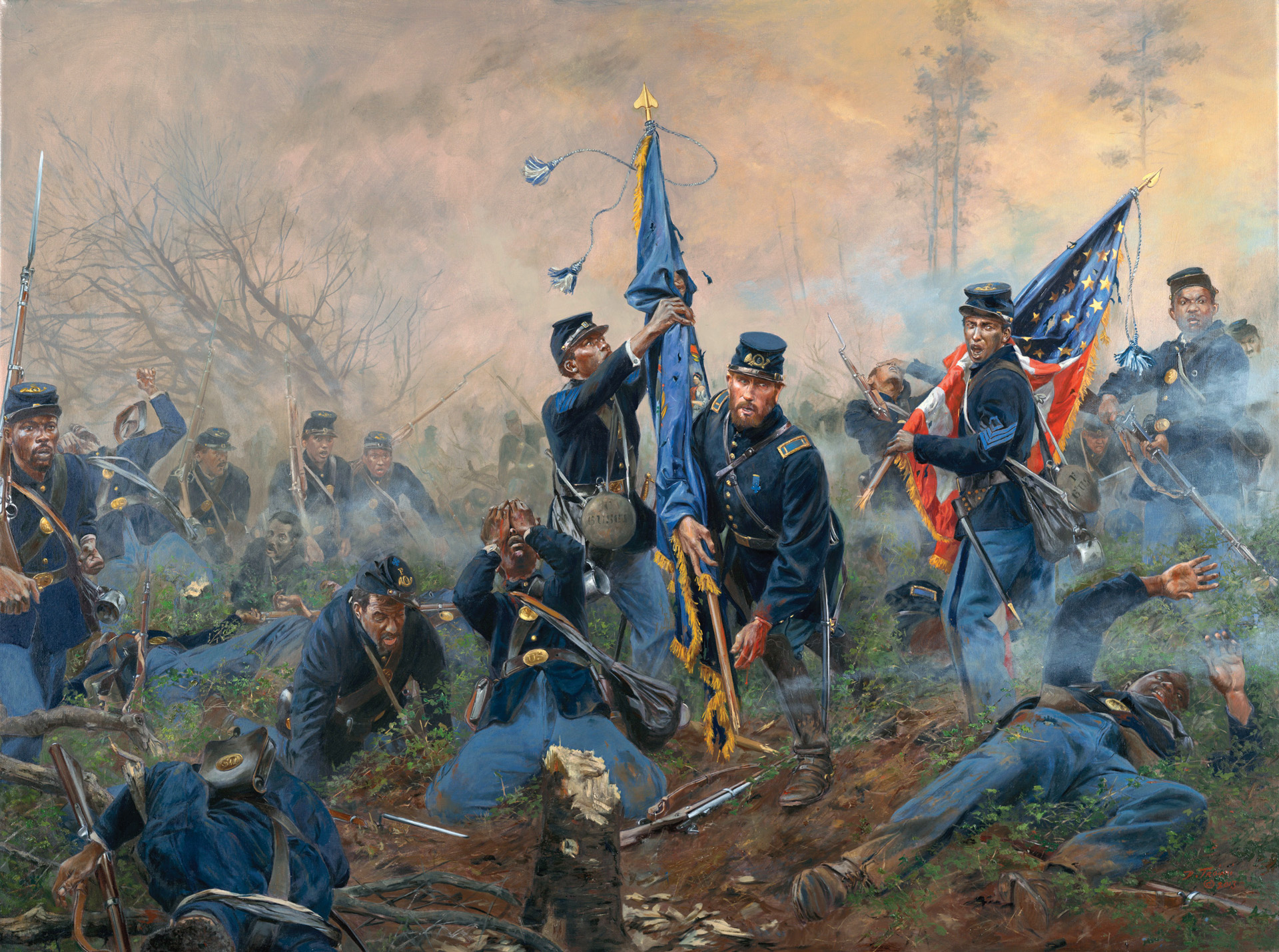
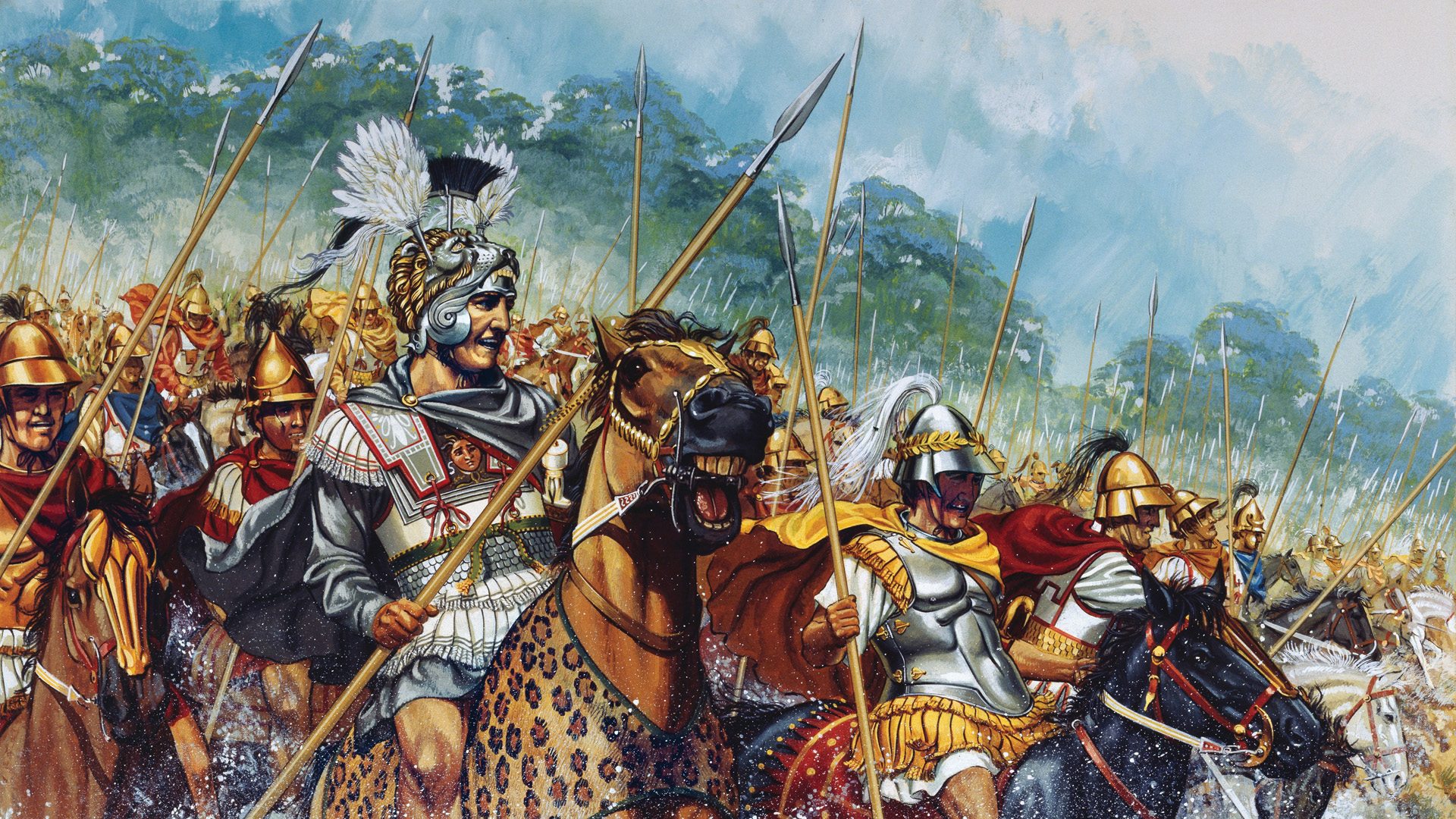

Join The Conversation
Comments
View All Comments